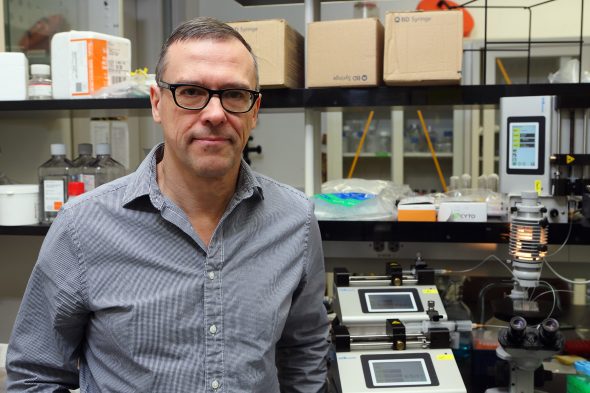Single cell genomics reveal key cell factor for dangerous identity loss in tumor cells
When proliferating cells reach their mature form as part of the eye, kidney or blood, they typically differentiate and stop dividing. But in some cases, genetic errors cause these cells to turn back the clock and dedifferentiate — losing their final identity and regaining the ability to proliferate. This phenomenon can result in tumors, and pathologists often use the extent of dedifferentiation to assess the aggressiveness of a cancer.
In a new paper published by Developmental Cell, UIC researchers used single-cell genomics to identify a key factor in this process. By carefully examining how two tumor suppressor pathways interact in the eye of the fruit fly, a team led by Maxim Frolov pinpointed the cellular elements responsible for dedifferentiation.

Single-cell genomics is a laboratory method that allows researchers to measure the DNA and RNA from just one cell, instead of collectively across many cells in a sample. In 2018, Frolov’s group was the first at UIC to publish a study that used single-cell genomics to systematically identify cell types in a heterogeneous tissue based on gene expression.
“It’s absolutely revolutionary technology that’s really helping people drive discovery,” said Frolov, a professor in the UIC Department of Biochemistry and Molecular Genetics in the College of Medicine. “Single-cell genomics allows you to dissect this heterogeneity, so you can target different types of cells within the tumor. It’s a more personalized approach.”
The method allowed the researchers to follow up their earlier work on the overlapping functions of two tumor suppressor pathways called RB for retinoblastoma and Hippo, named for the enlarged organs seen in flies with the gene knocked out.
When both pathways are turned off in a fruit fly eye, a subset of photoreceptors revert back to eye progenitor cells. But it wasn’t until single-cell genomics that the researchers could isolate those dedifferentiated cells and dig deeper into which genes were responsible for the change.
They found that the primary culprit was a transcription factor called Homothorax that plays an important role in fruit fly eye progenitor cells but is normally inactive in mature cells. While the genetic players may be different in flies and humans, the overall similarities could provide promising leads for better understanding and treating cancers.
“The expectation is that this type of interaction would be conserved throughout different systems, so we may get some ideas about how the pathways work in mammalian cells,” said Frolov, who also is a member of the University of Illinois Cancer Center, which is part of UIC.
Alexandra Rader and Battuya Bayarmagnai of UIC co-authored the paper. This work was supported by the National Institutes of Health grant R35 GM131707.
